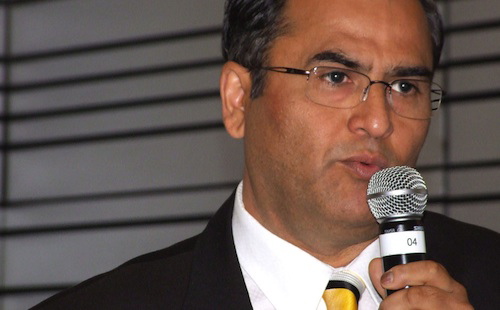
MTN SA plans to build a third-generation (3G) mobile network to offer wireless broadband to consumers in outlying areas. It will build the 3G network at 900MHz.
TechCentral has learnt that MTN expects significant growth in demand for broadband services outside SA’s cities over the next few years and so is keen to boost its 3G coverage in these areas.
Building its network at 900MHz is particularly important as it will allow MTN to provide wider coverage with fewer base stations, reducing costs, and making it feasible to deliver broadband in areas where it wasn’t possible before.
Until now, SA’s two big mobile network operators, MTN and Vodacom, have used the higher-frequency 2,1GHz band, which offers a smaller footprint around towers.
It’s not immediately clear how much MTN plans to spend on expanding its 3G network. Its capital expenditure in the first six months of 2010 amounted to R1bn, a sharp reduction from the R3bn it spent in the comparable period in 2009.
MTN SA chief technology officer Sameer Dave says the company is planning to “refarm” a portion of its 900MHz spectrum, used for second-generation (2G — mainly voice), for 3G. It will only refarm this spectrum outside the cities; 900MHz will continue to be used exclusively for 2G in urban areas.
MTN is not the first SA operator to consider refarming its 900MHz spectrum. Cell C is building its new 3G network at 900MHz, too, and the company regards the lower frequency as a key competitive advantage. And Vodacom is running a small pilot in a remote part of the country to test the feasibility of refarming some of its spectrum.
Dave says MTN has concluded a detailed test, involving 20 base stations in Limpopo province, and has proved the technology delivers a 30% increase in coverage over 3G at 2,1GHz.
Once the company begins deploying the network — and it will be done on a region-by-region basis — then he expects MTN’s 3G coverage to expand dramatically. At the moment, MTN covers 48% of the SA population with its 3G network.
“There’s a big market in the rural areas for broadband,” Dave says. “The bulk of our broadband customers will eventually come from those areas.”
The poor penetration of Telkom’s broadband digital subscriber lines outside the cities will also propel growth, Dave says.
He concedes, however, that backhaul networks — the links that connect its base stations to its core network — could prove the biggest challenge in creating broadband coverage in outlying areas.
For now, many of the new 3G towers will have to be connected using microwave equipment. This is a challenge, especially for towers that are located far from cities — and many of them are far away because of the country’s large geographic area.
Ultimately, though, Dave says he hopes high-speed fibre will be deployed to most of the base stations.
“Our plan is to start by linking communities that are closer to the cities, rather than those that are completely in the hinterland,” he says. — Duncan McLeod, TechCentral
- Subscribe to our free daily newsletter
- Follow us on Twitter or on Facebook

